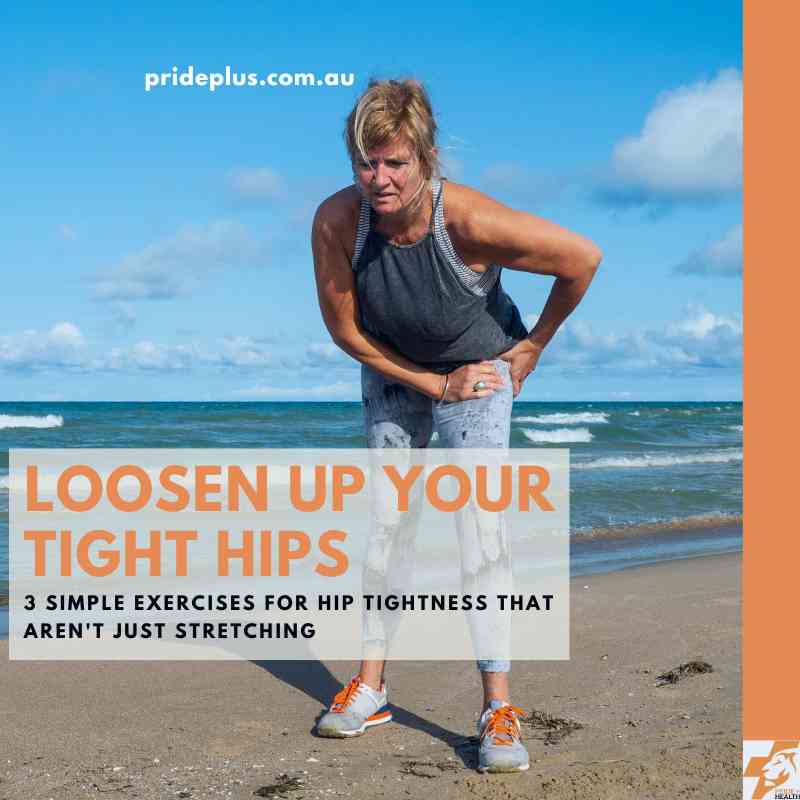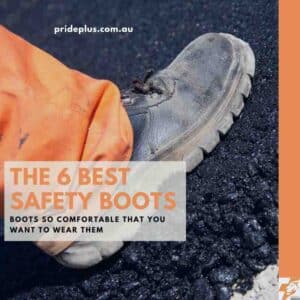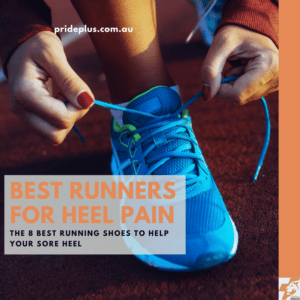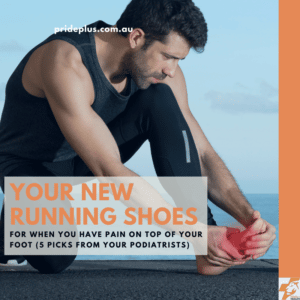Get ready, you’re about to learn how to loosen up your tight hips.
If you’re someone who has struggled with hip pain, or if you get a sharp catching feeling in your hip joint in the morning you know just how frustrating having tight hips can be. If you’re lucky, you’re reading this in the early days of having tight hips… you’re only a few minutes away from being able to help loosen them up with these exercises.
But, maybe you’re not so lucky?
Unfortunately, having tight hips is very common but the solution to fixing them isn’t always clear. Some people even get hip pain because of their feet.
As your physiotherapist in Pascoe Vale, I’ve seen too many people go down the wrong path.
Stretching alone won’t loosen up your tight hips.
But you know it feels like it should.
Just one good hip stretch a day and your tight hips will become all loose and flexible again. It doesn’t work like that in reality, does it?
In reality:
- You only stretch when you remember, which is when it’s catching and tight. That’s not a prevention strategy, you’re only treating the symptoms.
- Stretching doesn’t increase capacity. If your hip is tight, you need to have more capacity in your hip, upper leg and gluteal muscles.
- Stretching isn’t sustainable. I’ve not met many people who think that they can do a hip stretch multiple times per day, every day of the week. Forever.
So, here’s how we physiotherapists help overcome tight hips to have them feeling loose, free and flexible again.
It’s all about addressing the aggravating factors for you and increasing the capacity of your hips to do more work again.
Banded Bridge For Super Glutes and Tight Hips
The first exercise to help your tight hips is the resisted abduction glute bridge.
With this exercise, you are simultaneously working on your:
- External hip rotators.
- Hip abductor muscles.
- Hip extensors.
During all hip movements, the muscles of the hip work together to control the pelvis and provide support, hence why performing this exercise incorporates these two functions of the hip.
By doing this exercise, you will be able to feel the outside of your hip muscles working, which is often neglected and contributes to hip instability and pain.
Banded Hip Abduction Exercise
The second exercise you will be performing is the standing banded hip abduction.
Like the previous exercise, this one also focuses on the external rotators and abductors of the hip. However, when one leg is moving, the muscle on the opposite side is still working to help stabilize your pelvis, which is important, especially during walking and running.
Banded March For Tight Hips
The last exercise for you to focus on strengthens your hip flexors.
More often than not, people believe this muscle is tight, and just keep on stretching it. This might provide some short-temporary relief, however, you are here for long-term relief.
When people think this muscle is tight, it is weak, you need to strengthen it. The standing banded hip march not only works on stretching the hip flexor muscles but also improves balance as it is a single-leg exercise.
After doing this exercise consistently, you will find that not only do your hips feel less tight, but your balance has also improved.
Before you go
Tight hips are can be the precursor to hip pain developing. A warning sign you need to do something (hint hint these exercises might be just what you need). But, they can also be a positive sign as well. If you’re struggled with hip pain for a long time and you’ve been working with your physio on getting better, you’ll find that you go from hip pain, to tight hips, to feeling loose, limber and pain free again.
So, stick to your plan, see your physiotherapist (you can book in with Mo and our physio team) and you’ll get to where you need to go.
About the Author

Pascoe Vale physiotherapist Mouhamed Ziftawi wants you to be able to overcome your feeling of tight hips. And not just the feeling you get after a good stretch where you know your hip tightness will come back. Mouhamed wants you to be able to live your best life without your hips feeling tight at all.
With hip pain you should also consider…
In addition to these exercises, it is important you also increase your overall activity levels through other forms of exercise such as walking, swimming, cycling, pilates and even yoga. Sedentary lifestyles have been linked to multiple comorbidities, so engaging in a more active lifestyle will not only reduce your current hip pain but also reduce the risk of other health issues occurring in the future.
If you’re not sure where to start, a trip to your EP (exercise physiologist) is a great first port of call.
And you should also consider the aggravating factors of your hip tightness. These are behaviours or lifestyle factors that cause your problems to worsen. It is essential to identify these factors to determine the irritability of your issue.
For hip pain, some aggravating factors include prolonged sitting or standing, prolonged walking, and excessive or repetitive bending and squatting.
When identifying aggravating factors, you need to be mindful of the time to onset, the intensity of symptoms and the time it takes to ease. When you know what these factors are, it prevents you from being subjugated to the boom-bust cycle, which simply means you are going around in circles.
If we continue to do our exercises without identifying and addressing these aggravating factors, we can become stuck in a perpetual cycle of getting better and then returning to your baseline levels of pain. This is what we physiotherapists love working with you on the most.




